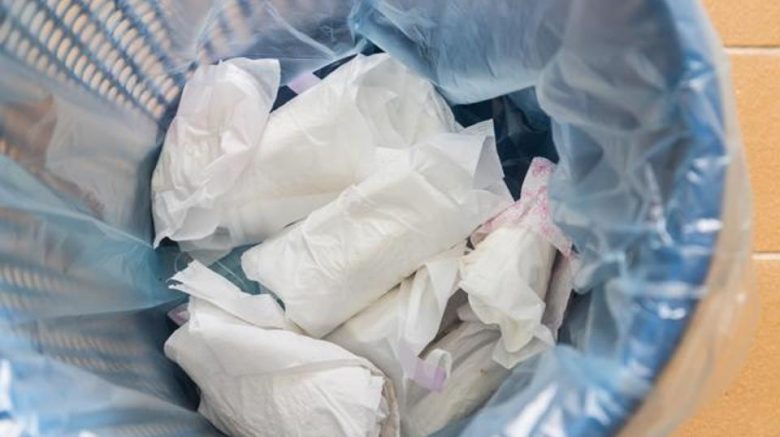World Environment Day: How disposable Sanitary Napkins mess up Health and Hygiene
Our grandmothers may have used cloth pads, but periods are unimaginable without disposable sanitary napkins for women today. However, what doesn’t occur to most of us is that over a billion of these non-compostable sanitary pads are making their way into sewerage systems, landfills, fields and water bodies in India every month, posing huge environmental and health risks.
With taboos and superstitions galore about menstruating women in India, safe technologies and interventions to dispose and treat menstrual waste have become a huge challenge.
Though the Indian government is ensuring that all women and girls, especially in rural pockets, have easy access to sanitary napkins, the need of the hour, say experts, is to give “more attention” to managing menstrual waste, which is estimated to be 113,000 tonnes annually.
To address this issue of menstrual waste, the government came out with new Solid Waste Management (SWM) rules last year. These rules makes it obligatory for the manufacturers, brand owners or marketing companies of sanitary napkins and diapers to provide a pouch or wrapper for their safe disposal. But that doesn’t seem to be enough.
With no knowledge of how to dispose off disposable sanitary napkins, most women just throw them in the garbage bin which usually gets mixed up with dry, wet and hazardous waste.
 Myles Ellege, senior director at RTI International, a leading non-profit applied research and consulting organisation based in North Carolina, US, said although some Indian states and cities have given “some attention” to waste segregation or waste management with incinerators at schools or institutional settings, “it is not widespread”.
Myles Ellege, senior director at RTI International, a leading non-profit applied research and consulting organisation based in North Carolina, US, said although some Indian states and cities have given “some attention” to waste segregation or waste management with incinerators at schools or institutional settings, “it is not widespread”.
“The issue of managing menstrual waste is one that needs more attention… MHM (Menstrual Hygiene Management) is a neglected issue, and disposal is probably the most neglected topic in the MHM value chain,” Ellege said.
According to Shradha Shreejaya, an active campaigner in Sustainable Menstruation Kerala Collective, a Kerala-based NGO that promotes bio-degradable and toxin-free sanitary products, “India has been very messy about dealing with its sanitary waste…” and described the new rules as “very weak”.
“We have found ignorance regarding the raw materials used in making most sanitary products that are falsely assumed to be only cotton and plastic – the products are more than 90% plastic with super absorbent polymers and non-woven plastic components that make it extremely difficult to dispose off in a backyard shortcut way,” Shreejaya, who is also a supporter of EcoFemme which manufactures and promotes reusable cloth pads.
The plastic layer which is used to make a disposable sanitary pad stain-free and the chemicals used in producing it get further transferred between soil, water and air. Arundati Muralidharan, Manager-Policy (WASH in Health and Nutrition, WASH in Schools) at WaterAid India, an international charity that works in the area of water, sanitation and hygiene services, said
“If we do not begin to address this issue now, we will have volume of non-biodegradable waste that will take hundreds of years to degrade.”
According to a survey, about 336 million girls and women experience menstruation in India, which means that approximately 121 million of them are using disposable sanitary napkins.
In a survey, Path, a global leader in innovations, which works with industry, governments and other stakeholders, to bridge gaps between the supply and demand of quality products and is currently working on testing a hybrid reusable sanitary pad, estimated that over a billion of these non compostable pads are being dumped in landfills and sewerage systems.
Most women in big cities and towns go for commercial disposable sanitary napkins (DSN) not knowing that some of these products pose health hazards due to its chemical cocktail content (dioxin, furan, pesticides and other endocrine disruptors), said experts.
Apart from the fact that it cannot be recycled, the exposed sanitary napkin poses grave health risks for the waste collector.
The problem does not end here. The plastic layer which is used to make it stain-free and the chemicals used in producing it get further transferred between soil, water and air, experts added.
Most women and girls in rural India use cloth, which if not dried in proper sunlight for reuse could lead to further health complications. In fact, many women in rural India tend to throw them in open spaces, like rivers, wells and even roadsides as they don’t have access to safe options.
Activists are advocating using reusable eco-friendly sanitary pads, including cloth pads, biodegredable pads and cups. According to Manish Malani, co-founder of She Cups, they came to know about menstrual cups when they were looking for economical diagnostic kits for cervical cancer patients.

